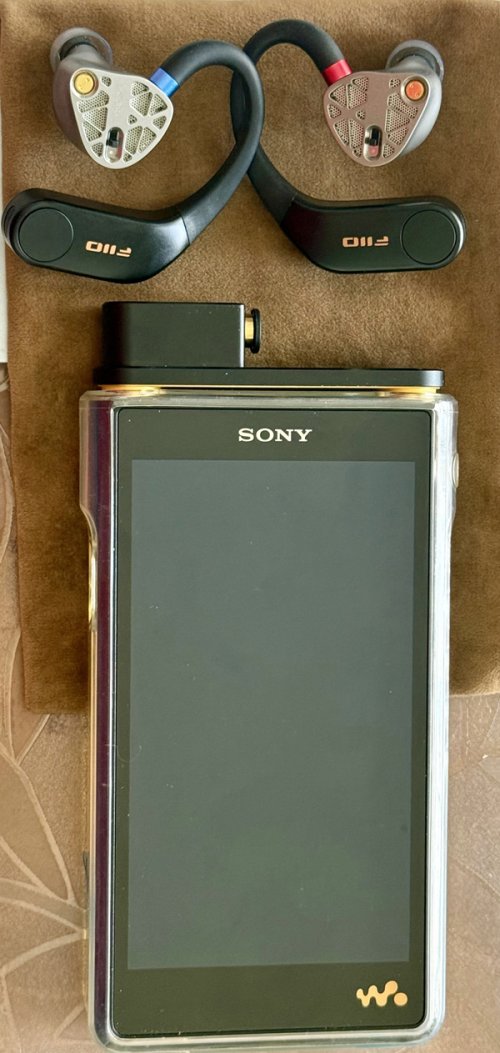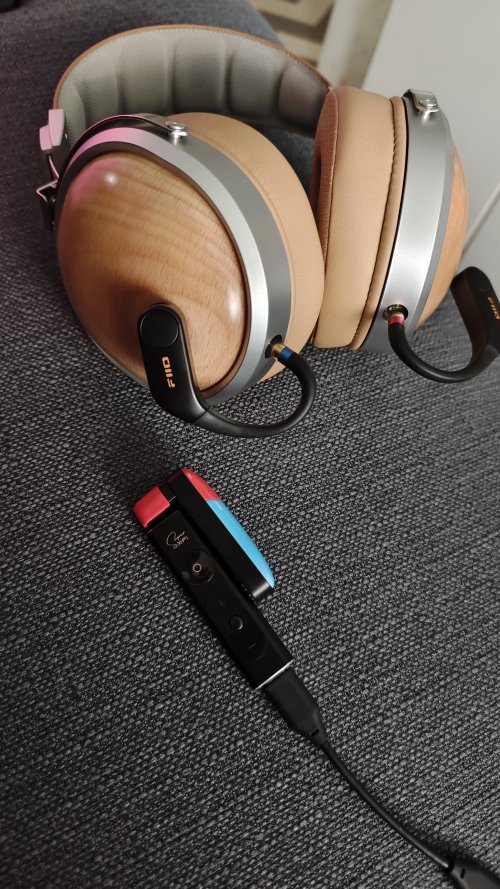Hi everyone.
Finally cant take it anymore. bought this thing on stellar reviews, and its quite a compelling product with great potential - great SoC + great amp + flashable - in a nice TWS-ish form factor, in a well refined case.
FiiO wasn't wrong, technically. They put a piece of solid hardware indeed capable of doing 24/96, with decent battery life, in a small form factor. Hardware wise - this thing is the bees knees. Good stuff.
However, FiiO has managed to build something worth less than the sum of its parts. What was promised to be 24/96 - was quickly discovered to be limited to lossy codecs with annoying clipoffs at 15khz frequency range, no matter the codec used.
And the promised LHDC was only just released, and but quite buggy and lack of host support, tbh. Might as well just give us a good open source codec - more utility.
Since FiiO has managed to deliver on strong hardware, yet lacking firmware - i think its time to make our own.
Able to serial into the device and issue commands to change codec, tweak bitpool settings, negotiate higher bitrate on an old codec which delivers aptx HD-like quality. (go google SBC XQ). My personal best was 640kbps SBC - dual channel, Loudness, 12 blocks, depth 8 @ bitpool of 55. Have given up on aptx and LHDC. aptx adaptive havent tried because my samsung exynos phone didnt provide it. But thats another story.
Have also bricked my left earpiece in this trial and error process, but thank goodness for dfu-mode.
Anyway. FiiO - if you are able to post publicly on a git - or send me a decompiled version of the latest *.bin file, that would be great.
--------------
Also, i noticed that majority of user pain points are centric around 2 things (besides giving crappy codecs and calling it a Hi-Fi unit) -
Priority fix for these bugs please -
1. Sticky DVC disable mode - since the DVC settings i set on android (in developer settings) are sticking to the next device i connect to, which results in wavering volume upon hitting some gain ceiling and dithering. Factory reset makes the symptom go away. but doesn't solve the problem cos it'll come back.
2. Not sure why, but this thing somehow auto downsamples/upsamples the stuff it plays sometimes, contributing to a peculiar muddy, slightly modulated metallic tone in the music. This is what people have experienced after upgrading to 1.5, and went back to 1.42, but actually not required. Just flash twice and factory reset. After that make sure it stays on one frequency - 44.1 or 48. - and stick to it all the time. (This is quite impractical for me personally, but i've made everything 44.1 because of this bug. And because Samsung androids only does 44.1 on aptx and aac. (no apt adaptive).
Edit: 2a: Also there seems to be some form of cross-device volume stickiness accumulated over time. e.g. I usually listen @ volume 16, but have noticed over time I only require volume 10 to get same volume, but lots of clipping when music becomes loud. Seems to be +gain distortion that i'm experiencing. Factory reset solves the symptom, but not root cause. Could be related to point 1 - DVC. Am unsure, but problem does exist.
Edit: 2b: Either disable the aggressive device pairing and stick to traditional single-point connectivity to host (not much use anyway for me), or in Fiio Control allow user to sort pairing order in priority + ability to forget previous devices paired. Redundant feature + inconvenience -> should remove the feature. Or fix.
---------
Improvement points other than bugs:
3. The 'pseudo loseless' codecs that are actually useful, like aptx-hd, aptx ll, l3, aptx-loseless, they dont include. But they throw in a LHDC thingy that nothing can support except in 0.001% of devices. LDAC would be really nice - but i get it - $$$ for codec licensing on a 1 year old product at mid-life cycle. ok fine. maybe not cost effective on your side. But the others though! Highly implementable! - therefore:
Would be great if FiiO could include codecs mentioned above - the chipset does support it - i dont think it's a licensing issue.
Or if im wrong, at least give the user control on the SBC and AAC codec bitpool, switching between dual channel, stereo, joint stereo, - etc. , since that's open source. This alone would already de-limit a high potential market offering, without much need for more capital outlay and development.
3a. FiiO - might be worth to have your engineers look into changing the SBC maximum bitpool from 33 to maybe 50. And give user ability to force dual channel mode The hardware is capable of it, and it will negotiate downward if its not. And if it doesnt, you can write a simple automated script, factoring in RSSI strength and reducing/increasing bitpool on the fly - this could perhaps be implemented in the Fiio Control App since serial port is always connected to the host anyway This might help automatically increase negotiated bitrates.
3b. IMPORTANT + EASY TO IMPLEMENT: Would be good to put - EQ presets for the big 3 codecs - to compensate somewhat for the high frequency roll-off that the popular codecs suffer from near the 12-18khz band. I think this would be much more helpful than putting some "Rock" or "Pop" EQ preset. Or maybe thats what you guys implemented the high-pass filter thingy for - which is s good segue to next point below -
3c. Please make the high pass filter graph decipherable. Thats some snake oil crap u got going on there. Just doesnt make sense. Some graphs, the axes are differently labled. idkwtf is going on.
4. Some recognition is in order - This product, upon inspection, seems to have some rudimentary form of Bluetooth Low Energy implementation - Edit - removed. Qcc51xx has LE, but seems unable to use channel for streaming bandwidth increase. damn.
--------
If FiiO could release the firmware source, I believe modders will make the product good again in a way that FiiO can benefit by - a) selling more UTWS5s, and b) building their engineering team's software competencies to rival giants like Shure and Sony.
win-win scenario - and life cycle of a USD129.00 is increased as well - at least until the hardware breaks due to wear-tear.
Really great product. But really poor implementation. Send help

Finally - to the FiiO executive who reads this - its not hard to get a good Qualcomm SoC, case it up, value add on the software, brand it as yours - the sell it to wiling customers used to paying good money for good sound. But first and foremost, you are a systems integrator, which means this is heavily software dependent, and your true value proposition differentiating you from Shanling, iBasso, and others. Meaning - the software dev is the last thing u wanna be lazy on, cos thats the heart and soul of the device, and also the key touch-point the consumer either loves, or hates. But half the battle is already won - u have integrated good hardware.
If you fix up the software and the UI/UX stuff like how Xiaomi managed to do with their market offerings, you'll be able to compete at mass market level with the big established Japanese and American/Euro brands. Else, you'll be at the CHi-Fi plateau that you're at currently - good hardware, but tons of pain points and poor user experience - resulting in suboptimal revenue streams and untapped potential of your product line and business unit. Perhaps then i'll send u my resume.
tq and regards.























